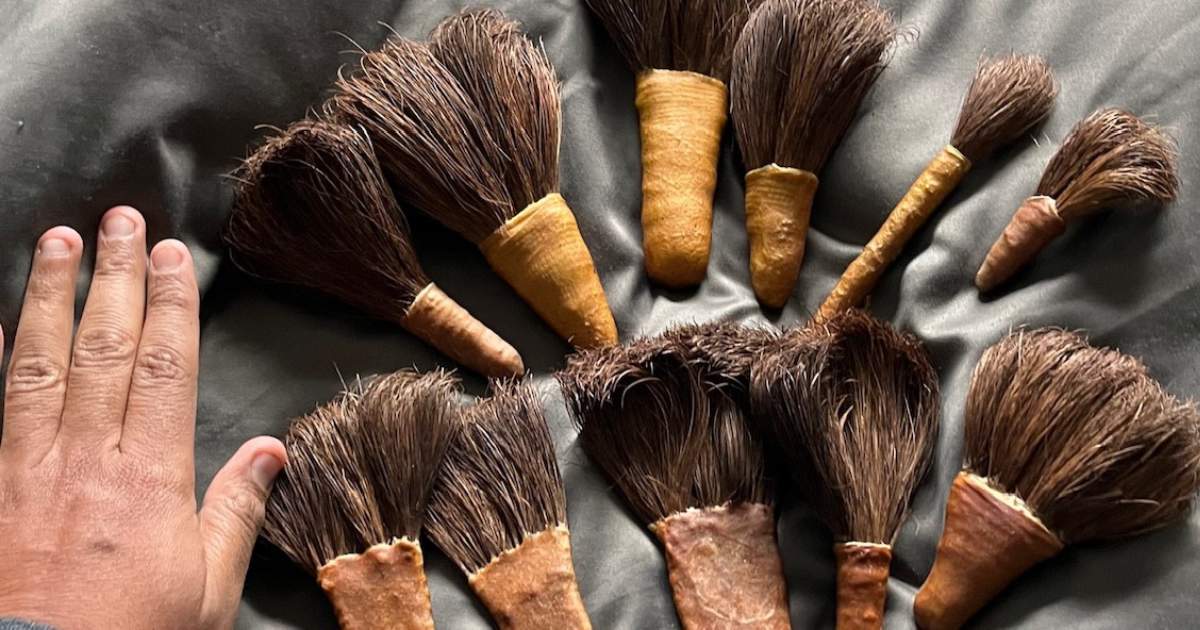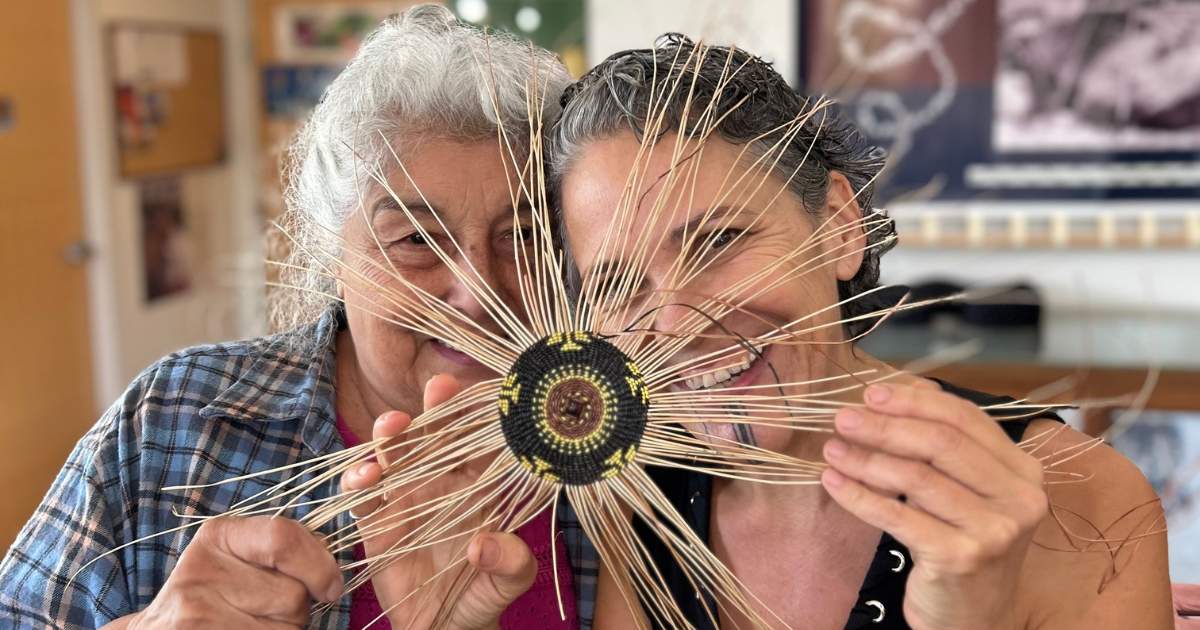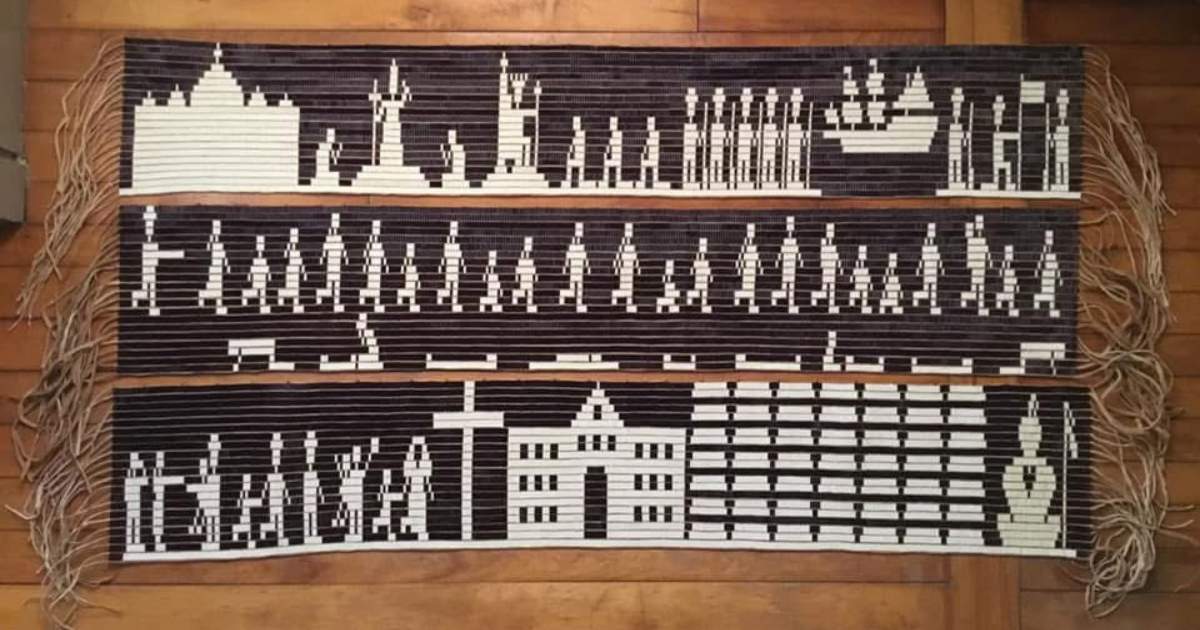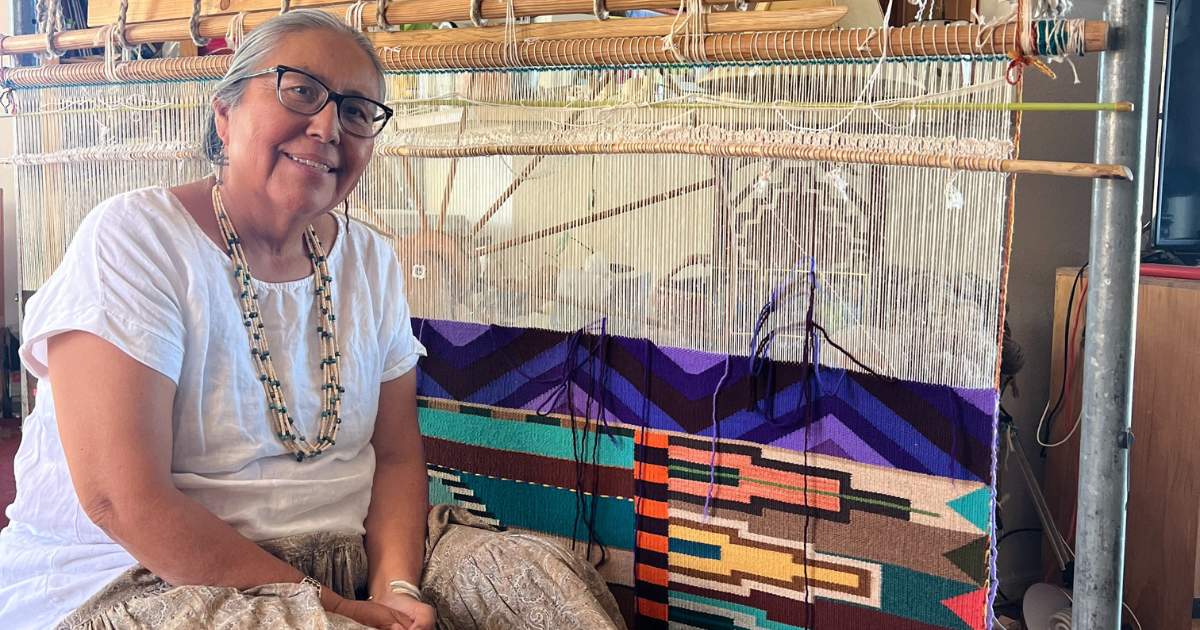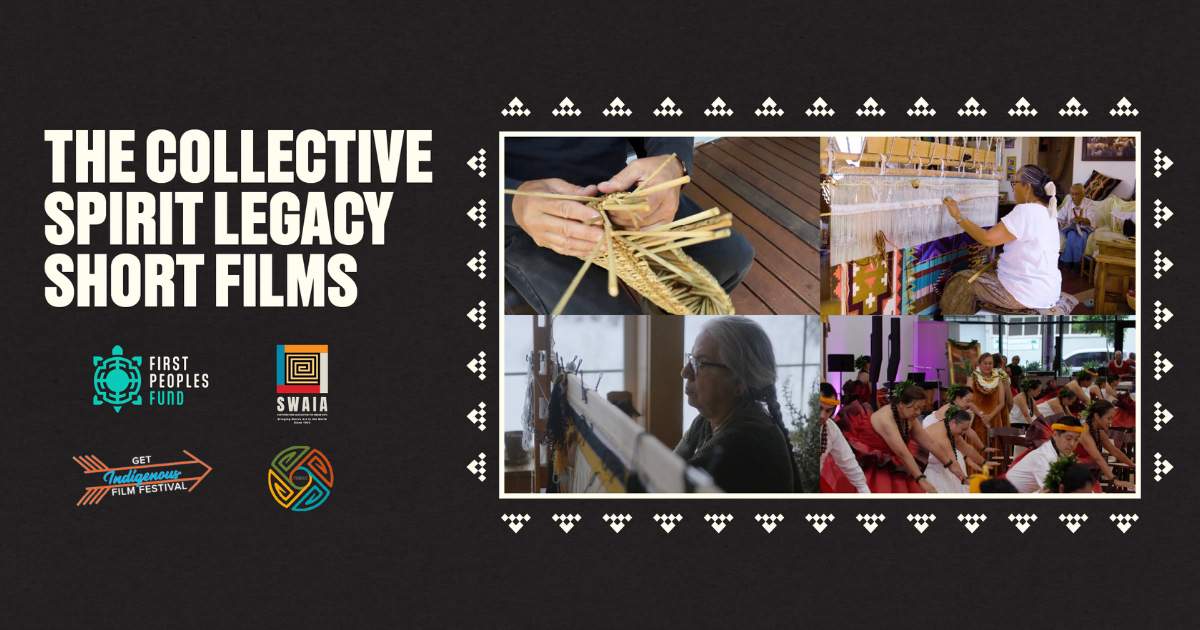
A Commitment to Everything Anishinaabe
By Sarah Elisabeth Sawyer (Choctaw Nation), Artist in Business Leadership Fellow 2015
“It’s important for our communities to understand what it takes for us to continue to thrive; it’s in celebrating the knowledge of our elders.” — Bird Runningwater (Cheyenne / Mescalero Apache), First Peoples Fund Board Member Beadwork artist.
Indian corn maker. Storyteller. Culture bearer. Veteran of two wars. 2019 Community Spirit Award Honoree. In all of these roles, George Martin (Lac Courtes Oreilles Band of Lake Superior Chippewa Indians) has been a steward of his people’s culture. He and his wife, Sydney, live their culture every day, passing on their knowledge to the next generation, strengthening their communities.
After serving 10 years in the U.S. Air Force, George and Sydney moved back to her homeland near Hopkins, Michigan, in 1969. George’s calendar fills a year or more in advance since he is often called on as Head Veteran dancer at the many powwows and events in the area.
“We live squarely in the middle of Match-E-Be-Nash-She-Wish Band of Potawatomi Indians (Gun Lake Tribe) original territory,” he explains. “We are in the Salem Indian Settlement. I consider my home all of Anishinaabe land.”
George’s mother-in-law, Gladys Sands, also lived with them. She was a black ash basket weaver and knew the old ways of preparing Indian corn to eat. George credits Gladys for teaching him the art. His tools are ears of dried Indian corn, hardwood ashes, a large pot, stirring paddle, handheld sifters, an open fire, cold water, rinsing screen, and tarps to dry the processed corn. Tribes, colleges, and universities throughout the Great Lakes region invite him to teach Indian corn making.
The dedication to this practice led to a feature of George on The Cooking Channel’s “My Grandmother’s Ravioli” series with host Mo Rocca. They followed George around as he lived the ancient lifeways of Anishinaabe people. He has practiced and shared the culinary artistry of corn soup making and peyote stitch beadwork for over 65 years.
“I believe my mission to become a full-time artist and teacher has been realized,” George says.
Several large-scale revitalization efforts and food sovereignty projects have utilized George’s expertise to preserve and protect these practices.
“My granddaughter Carly Shananaquet is now becoming well-known in the food sovereignty movement,” he says. “She has watched me all of her life share the art of making Indian corn for a food source. She represents the next generation of our people that will carry forward the ways of our ancestors.”
George’s children, grandchildren, and great-grandchildren also see him beading every day. His hope is that they understand how beautiful their culture is and try to honor it as much as possible.
“I will be 84 years old this December,” he says. “Being an active elder in my Anishinaabe community shows others to keep going. Keep practicing, keep learning, and keep being involved with our culture and protection of it.”
“He is a cultural icon, and yet a humble man content to bead, make soup, and share knowledge and stories with his people.”
— Lisa (Tiger) Martin, George's daughter-in-law and nominator for the CSA Award
George avidly practices the artistry of peyote stitch beadwork. He beads traditional dance sticks, talking sticks, coup sticks, moccasin game sticks, wooden spoon handles for ceremonial bundles, teaching sticks, walking canes, Veteran’s medallions, and household items.
“As a beadwork artist, George’s creations are singular and recognizable,” says Lisa Linda Lee Tiger (Muscogee [Creek] Nation). “His signature style of peaks and valleys lit by vibrant colors of greens, oranges, reds, and white dance on every piece he beads. His patterns bring to mind a rhythmic heartbeat, with beauty and emotion that are evident in the flawless landscapes he creates, tying together the past, present, and future into something that is often both beautiful and utilitarian. It’s as if he wishes for his art to be a part of someone’s daily life and not decoration only. His pieces live.”
Lisa first met George in 2000 when she was selected as the Native American Programs Director for Central Michigan University. She nominated him for the 2019 First Peoples Fund (FPF) Community Spirit Award. “He is a cultural icon, and yet a humble man content to bead, make soup, and share knowledge and stories with his people,” she says.
For George’s Community Spirit Award (CSA) honoring, a misunderstanding led to one of the highlights of the day. Weeks beforehand, Lisa was scheduled to introduce George. Sydney asked her if she’d written her remarks yet. Lisa teased that yes, she was going to say them entirely in the Anishinaabe language.
“I don’t know the language, so I thought it was going to be funny,” Lisa recalls. “But Syd got excited and said, ‘Oh that’s wonderful!’ And I thought, ‘Oh, no!’”
Lisa immediately reached out to an Anishinaabe language speaker and spent the next two weeks practicing. That didn’t wholly alleviate her apprehension of pronouncing the words correctly, but friends at the gathering encouraged her.
“They told me, ‘Just remember why you’re doing this. It is a gift that you’re trying to present,’” Lisa recalls. “When I went up, I specifically looked at George and told myself, ‘All right, this is why.’”
“When we honored him with the star quilt, the blanket was wrapped around him and his wife, Syd. He acknowledged how important she has been to his life, and his ongoing commitment to everything Anishinaabe.”
— Bird Runningwater (Cheyenne / Mescalero Apache), First Peoples Fund Board Member
The CSA honoring was held at the Ziibiwing Center of Anishinabe Culture & Lifeways in Mt. Pleasant, Michigan. People in George’s community, along with tribal leadership, FPF staff, and FPF board members, Bird Runningwater (Cheyenne / Mescalero Apache) and Kalima Rose, gathered to celebrate George. “He’s an upholder of Anishinabe lifeways, culture, and tradition,” Bird says.
“It was exceedingly powerful for George to be honored here for the work he does,” Lisa says. “He was recognized on four levels — his artwork, his cultural teachings, his position as a warrior and a leader, and in food sovereignty.”
George wasn’t celebrated alone.
“When we honored him with the star quilt, the blanket was wrapped around him and his wife, Syd,” Bird says. “He acknowledged how important she has been to his life, and his ongoing commitment to everything Anishinaabe.”
“There’s no George without Syd,” Lisa says. “They’re a team.”
“We plan our lives around going to ceremonies, cultural events, powwows, and treaty demonstrations,” George says. “My art and dedication to my people energizes me to be present and share my teachings.”






































































































